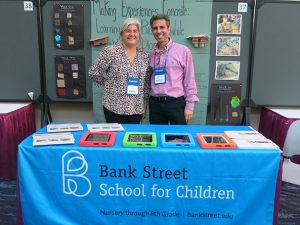
In November, School for Children teachers Gregory David and Maria Richa presented an integrated social studies and art curriculum on biomes at the National Council for the Social Studies (NCSS) in New Orleans. The presentation, titled “Making Experiences Concrete: Learning about Biomes while Making Dioramas,” focused on how teachers can use a blended curriculum to help students understand how geography, climate, vegetation, and animals impact the way we live and survive in different parts of the world.
The project was made possible by the launch of a successful SFC fundraising campaign supporting summer research. “The Summer Grants program has been a terrific way to collaborate with colleagues,” said David, 9/10s teacher. “The added time allows you to develop stronger relationships and think more deeply about your work.”
As part of the joint project, David and Richa documented SFC’s biomes curriculum to make it accessible to other educators. Their work was selected for participation in the NCSS conference from a pool of over 1,200 submissions nationwide.
The team shared their presentation with early childhood educators, high school teachers, and college professors, and explained how students at SFC work together as a community to gather, use, and interpret information as they explore biomes such as the rain forest or the desert. David and Richa used iPads, photo presentations, and sample materials to help depict how a combination of integrated art, field trips, technology, and literacy can contribute to a rich learning experience that inspires curiosity and critical thinking among students.
“Many asked, ‘Is this free?’ They were surprised that we were reaching out and sharing something so detailed,” said Richa, art teacher. “We noticed that some educators had done similar work, but not as in-depth. We offered them tiny details of our current curriculum that they may not have thought about.”
The complete course of study for grades three through five covers a range of topics including landscapes, shelter, vegetation, animals, and ultimately, a lesson on social action where students explore effective ways to help protect biomes around the world.
“The idea is to take an experience that is abstract and make it concrete,” said Richa. “We can’t physically take them to the rainforest, but we provide them with the tools to think of themselves in it. When they present their findings, they’re really reflecting on learning. Then they become curious and want to investigate more.”